

Table of contents
- hardy
- winter protection
- Flowers for the balcony box
- plants for the bed
There are a number of flowers, shrubs and perennials that can easily survive the winter in the garden. They bring color to the wintry garden with leaves and fruits. If the plants are cultivated in tubs, care in winter is a bit more complex. In the right location and with well thought-out precautions, the plants can stay outside even under icy conditions.
hardy
If plants are called hardy, they can still be damaged. If frost-hardy young plants were repotted before the onset of winter, there is not enough time for growth. Sub-zero temperatures can cause damage to the plant. Even sick plants do not survive frost easily. The hardy plants do not survive if their roots are at the mercy of the frost. Evergreen plants don't slow down their metabolism during the cold months. They need continuous moisture in the substrate so that evaporation via the leaves does not lead to a water deficit.
winter protection
In particularly severe and snow-free winter months, you should make sure that the substrate does not freeze through. While you can protect the garden soil with a thick layer of mulch, insulation made of jute bags, foil or garden fleece is recommended for pots and balcony boxes. Choose a large plant pot so that after filling there is as thick a layer of soil as possible up to the inside of the pot. You can place the pot on wooden boards or styrofoam plates so that the cold does not move from the ground into the pot. Evergreen balcony plants should not be exposed to direct sunlight in winter, as there is a risk of drought stress. In sunny locations you can protect the foliage with a transparent garden fleece.
Tip:
A fiberglass, zinc, or metal planter will also withstand the frost. Terracotta and clay pots are porous and absorb water, which the material bursts open after freezing.
Flowers for the balcony box
Not many plants are capable of developing buds during the cold season. The few species among them are specialists who are not only important for the insect world. Early bloomers set color accents when other plants are still dormant. Due to their small space requirements, they are ideal for planting in balcony boxes.
cushion primrose(Primula vulgaris hybrid)
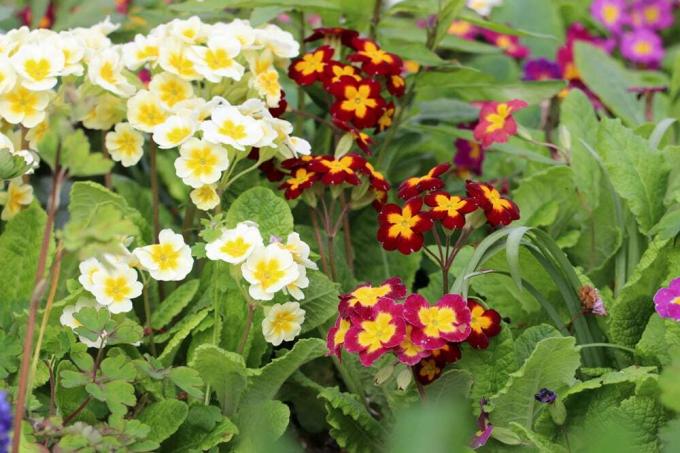
The colorful perennials create an exciting firework display in the balcony box from January. Its flowering period extends into May. After the flowers have withered, the plant adorns balcony boxes as a decorative leaf perennial. There are annual and perennial varieties. The above-ground plant parts of the perennial specimens die off in autumn. After the winter they sprout again. Pillow primroses do not require maintenance in winter. Make sure that the substrate does not get too wet. Place the bucket in a place protected from snow and rain directly on the wall of the house. Watering is carried out in January, when the first shoots appear. Give the plant a liquid fertilizer so that the flowers are more lush.
- hardy to -20 degrees Celsius
- grows between five and ten centimeters high
- thrives in cool, partially shaded locations
Evergreen candytuft(Iberis sempervirens 'Dwarf Snowflake')

With its compact and cushion-like growth, the candytuft adorns not only rock gardens but also window boxes. The dense clumps of leaves remain with the evergreen plant during the winter months. Its graceful growth makes it the perfect plant for flower boxes. This hardy plant also has no problems with the urban climate. Your water needs are low. The substrate should not dry out completely in winter so that the water cycle is not interrupted. Since the plants do not shed their leaves, moisture evaporates through the leaves even in winter.
- hardy to -23 degrees Celsius
- Growth height 15 to 20 centimeters
- sunny and rain-protected balconies
ornamental cabbage(Brassica oleracea)
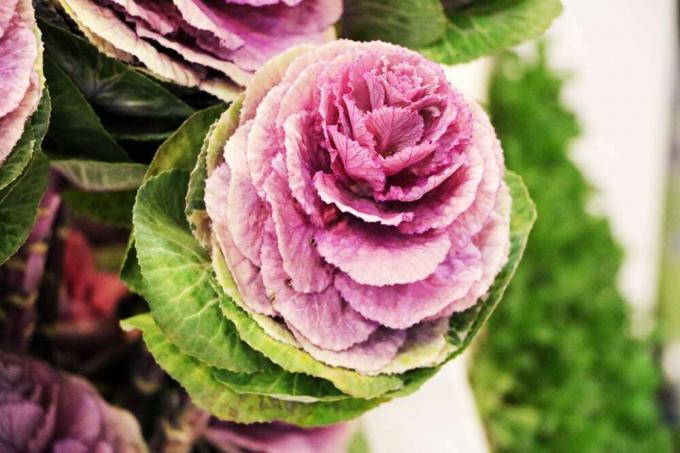
As a hardy plant, this vegetable cuts a fine figure in the flower pot. Ornamental cabbage is biennial and sets visual accents in the wintry garden with its brightly colored leaf rosettes. The color palette ranges from creamy white to yellow to various shades of pink, red and violet. Towards the edge of the leaf, the color runs into a dark or bluish to violet green. The color of the leaves intensifies until the onset of winter, which is related to the falling temperatures. During the winter, the substrate should not dry out completely, because the cruciferous plants like constant moisture.
- hardy to -15 degrees Celsius
- Growth height between 30 and 50 centimeters
- prefers sunny locations
heather carnation(Dianthus deltoides)
As a native species, the heather carnation is adapted to the cold winter temperatures. Its red, pink or multicolored flowers appear between May and June. The flowering period of the herbaceous plants extends into November. The stem leaves are narrow, lanceolate and silver-green in colour. Heather Pinks develop dense cushions that adorn rock gardens and drying beds. Because of its manageable growth height, the plant is perfect for the balcony box. Since the plants need dry substrates with high permeability, you should enrich the plant substrate with gravel, sand or perlite. In winter, make sure that the soil in the bucket or bed does not get wet. The roots easily begin to rot, so diseases can settle.
- hardy to -40 degrees Celsius
- Growth height between ten and 40 centimeters
- grows in very sunny places
Large-leaved Caucasus forget-me-not(Brunnera macrophylla)

The light blue flowers of the Caucasus forget-me-not are reminiscent of the floral splendor of the native forget-me-not species. They appear between April and June on short-stalked inflorescences. Fresh flower buds are endangered by late frosts. Cover the plants with anti-freeze fleece. In the wild species, the simple leaves are lanceolate to oval in shape and colored green. There are attractive cultivars with cream-colored leaf margins, heart-shaped leaf blades, or silver-spotted leaves. Many varieties have inherited the hardy traits of the parent plant. It has adapted to the extreme conditions that prevail on the mountain slopes of the Caucasus at altitudes of up to 2,000 meters. As winter approaches, the plant stores its energy in rhizomes that survive in the soil.
- hardy to -40 degrees Celsius
- grows between 20 and 40 centimeters high
- thrives in sunny and semi-shady places
plants for the bed
Higher-growing, hardy species are conditionally suitable for cultivation in tubs. They are better off outdoors, where they dormant in the ground during the winter months and sprout again the following spring.
Genuine Solomon's Seal(Polygonatum odoratum)

As a plant of deciduous forests, this plant prefers locations with wet conditions. Its creamy-white flowers add contrasting accents to dark areas of the garden. The plants develop their flowering splendor from May to June. In autumn, the deep black colored berries create a contrast to the bright yellow colored leaves. Shortly before the onset of winter, the plant withdraws its energy from the leaf mass in order to store it in the root tubers. They survive the winter in nature without any problems, since the forest floor is protected from freezing by the fallen leaves.
- hardy to - 32 degrees Celsius
- grows between 15 and 50 centimeters high.
- for semi-shady and shady locations
Soft woman's coat(Alchemilla mollis)

This species, native to eastern and southern Europe, beautifies the garden during the growing season with rounded and lobed leaves. Its surface is softly hairy. During the rainy season, they look beautiful when rainwater rolls off in large drops. The tiny flowers appear in loose inflorescences from June to July. The above-ground plant parts die off shortly before the onset of winter and lie flat on the ground. They do not need to be removed as they serve as a natural protection against frost. Cut off the remains in the coming spring so that the fresh shoots can unfold unhindered.
- hardy to -26 degrees Celsius
- Growth height up to 50 centimeters
- prefers light penumbra
blaze(liatris spicata)
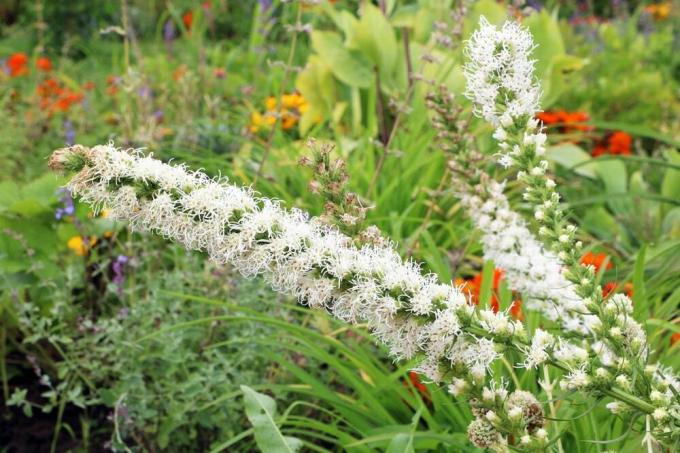
Butterflies and wild bees are attracted to the lilac, pink or white flowers of the hyacinth in summer when they open. The flowers form candle-shaped inflorescences. They open one after the other from top to bottom. The blossoms extend into September. With their lanceolate leaves, they form dense clumps that wither completely in autumn. They can be cut off just before winter or left in the bed. When choosing a location, make sure you have well-drained soil. The root tubers are sensitive to waterlogging. They can rot in too wet winter months.
- hardy to – 26 degrees Celsius
- grows between 30 and 100 feet tall
- prefers sunny to semi-shady places
barbel(Penstemon barbatus)
The plant originally comes from North and South America. Depending on the variety, pink, blue, purple or white flowers open between July and September. Specimens with multicolored petals are particularly decorative. The dark green leaves are elongated and are opposite on the stem. Beard threads have a high water requirement during the growth phase. Your roots should not dry out. The foliage of the perennial plants withers in autumn and provides natural protection against ground frost. An additional layer of mulch improves this effect and ensures that the soil does not dry out on sunny days during the cold season. The rhizomes are sensitive to waterlogging. A substrate that is too wet leads to the formation of rot in winter.
- hardy to -20 degrees Celsius
- Growth height 30 to 100 centimeters
- grows in sunny and wind-protected locations
girl eye(Coreopsis verticillata)
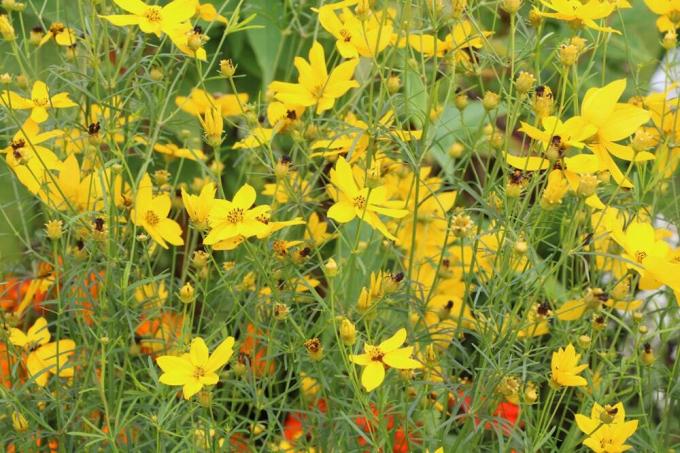
A plant of the prairie, the damsel's-eye is adapted to warm and dry conditions in summer and freezing temperatures in winter. It forms wiry stems on which filigree and almost needle-shaped leaves develop. The shoots strive upright and create a bushy growth habit. The blooming splendor of the prairie plant begins in May. It adorns the garden with countless star-shaped flowers that grow two to five centimeters in size and are golden yellow in color. Fresh buds regularly sprout up to September. The above-ground parts of the plant wither in autumn. They are left over the winter and cut off close to the ground next spring so that the fresh shoots get enough light.
- hardy to -20 degrees Celsius
- grows between 30 and 100 centimeters
- prefers sunny locations
 garden editorial
garden editorial I write about everything that interests me in my garden.
Learn more about caring for plants
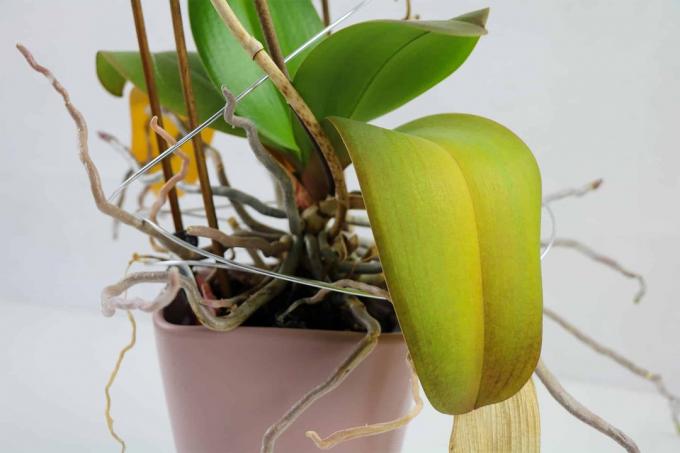
Plant hangs leaves despite water
If plants let their leaves hang despite water, this can have various causes. In order to prevent it from dying off by taking rapid countermeasures, you should find out about the possible causes and effective countermeasures here.
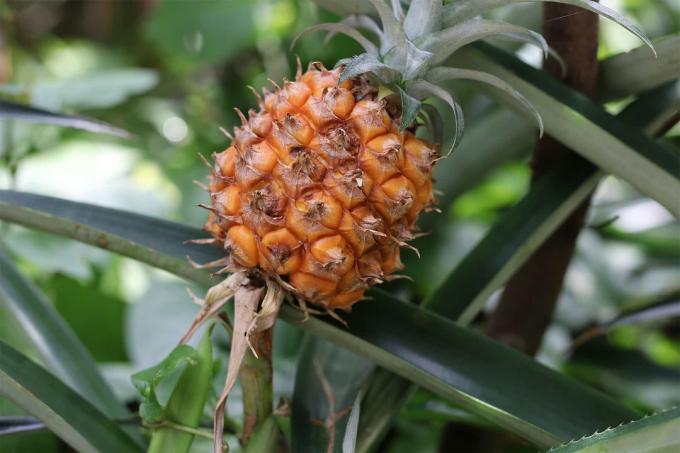
Plants hang their heads: what to do?
If the ornamental plants are cultivated in the garden or in pots and suddenly let their heads droop, then the question quickly arises as to why this can be. However, this is usually due to maintenance errors that need to be checked. If a remedy is found, most plants usually recover quickly.

Repot orchids: how & when to replant
Thanks to more uncomplicated and easy-care new breeds, orchids are now at home on many windowsills. In particular, the Phalaenopsis or butterfly orchid, which is available in countless varieties, is very popular. Read how and when you can best repot the distinctive beauties.

pull tree out of core | 7 tips for growing a tree yourself
Trees can be grown from cores without much effort. There are a variety of plants that have seeds and can be easily cultivated in your own garden. Special classic fruit trees should be mentioned, which are suitable for such a project.
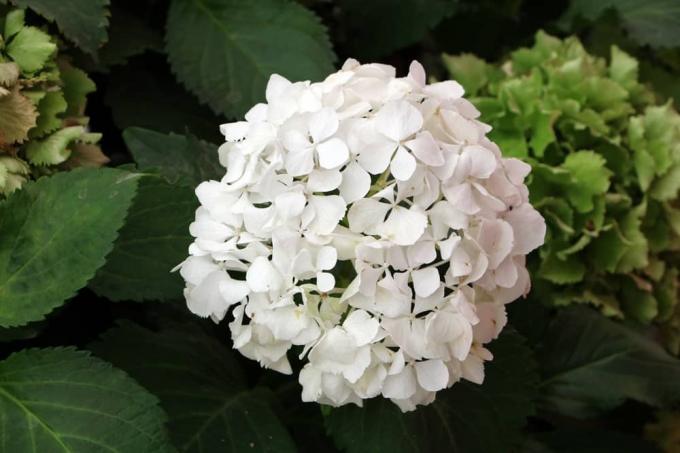
How do hydrangeas stay white? | That way it won't turn pink
How do hydrangeas stay white - this is the question many hobby gardeners ask themselves when the hydrangea changes color. The white often turns into a pink, which is usually comparatively pale or can appear "dirty". Here we reveal how it works.
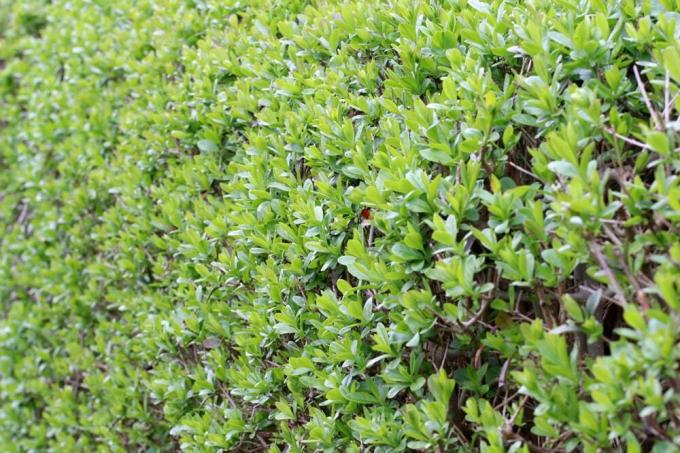
Cutting privet: when is the best time?
Privet is becoming increasingly popular and is often used as a privacy screen in the form of a privet hedge. This is not surprising, because the plant is easy to care for and fast-growing. However, it is crucial to cut the plant regularly at the right time.



